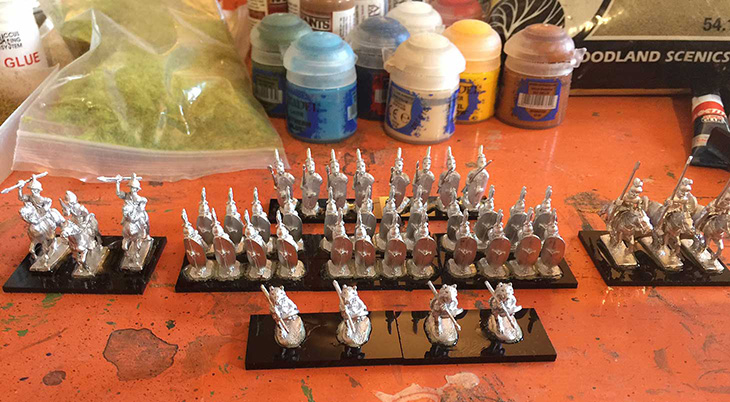My first love - Polybian Romans (290BC - 88BC)
10 February 2017
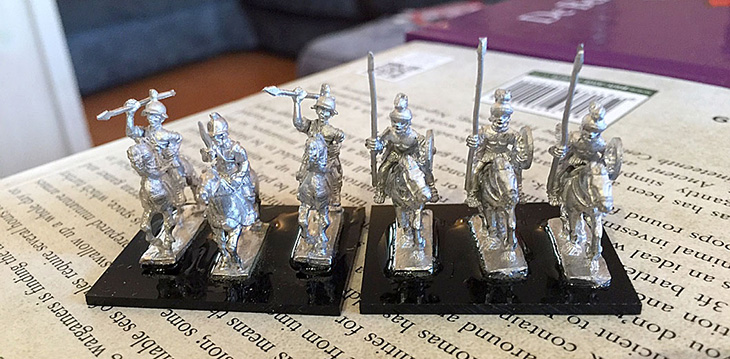
I've loved this army ever since I learned about it at school. I didn't really understand back then, but I now know that I was drawn to the wonderful look of the soldiers and chequerboard legions, with all its different ranks of of troops laid out in battle.
I also liked the range of enemies the army fought. From the Samnite Wars or the struggle for Italy, through the Punic wars with Carthage throughout the western Mediterranean, the wars with the Greeks for control of the eastern Mediterranean and finishing with the Social War or the War of Allies in Italy that signalled the end of the period that this army covers.
It's by no means a perfect army, but I think that's what attracted me to it in the first place. Over time there are lots of different armies embracing lots of change with lots of enemies.
The Roman army of the mid-Republic was not based on a single phalanx but used a manipular system of flexible smaller units in three lines sometimes supported by allied legions. The Legion was generally about 4,500 men strong with 300 of these being Cavalry, which makes a consular army of two Roman and two Italian Allied legions about 18,000 men in total. The army was also refered to as the Polybian Army, after the Roman historian Polybius, which covered a period from about 290BC to 88BC.
I can't help but get a little excited about basing and painting my little army.
Velites (Ps - Psiloi)
The Velites were the army’s primary skirmisher unit. They were the youngest and poorest of the troop and typically ranged in age from late teens to early twenties. Velites wore little armour, but carried a small round shield and a small protective cap covered in wolfhide that distinguished the Velites from other soldiers on the battlefield. They were armed with a javelin or a number of small darts.
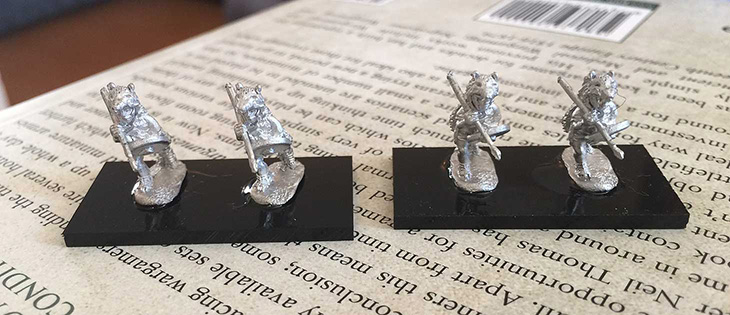
Hastati first line - Princep second line (Bd- Blade)
The Hastati were the first line of melee infantry used in Roman manipular formations. The soldiers were usually in their early to mid twenties and from wealthier backgrounds than the Velites. They had superior weapons and armour designed for close-quarter fighting, including a curved-rectangular shield (scutum), a brass breastplate and a helmet adorned with feathers. Their short sword, used for stabbing and thrusting was called a gladius or "Spanish Sword". Hastati also had two throwing spears called pila (pilum).

The Principes were the second line of infantry and made up of men ranging age from their mid to late twenties. Polybius states that the Principes were initially spearmen armed with a long stabbing spear called a hasta, but were later required to carry gladii and two pila like their Hastati companions. Principes were outfitted in the same kit as Hastati, the only differences between the two units being battle experience, age and wealth. The Principes would be organised in line behind the Hastati in battle. The Principes were dissolved in 107 BC following the Marian Reforms.
Thureophoroi (4 Ax)
Thureophoroi were mercenaries and would have served in both armies performing similar functions.
These were a type of infantry who carried a large oval shield called a thureos and were armed with a long thrusting spear, javelins and sword. They also wore iron or bronze Macedonian helmets.
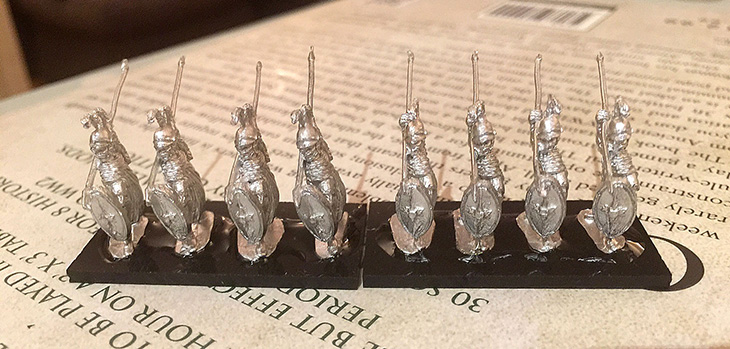
Thureophoroi often supported lighter troops but also seemed able to operate in a similar manner to peltasts, they were very well suited to smaller countires where they used them mainly for border defense. Being mobile they could rapidly advance over more varied terrain than some of the heavier units and Plutarch says they could fight as skirmishers and then fall back, assume spears and tighten the ranks, forming a phalanx.
The Triarii (Spear - Sp)
The Triarii were the third line in the Legion. They were the wealthiest and most experienced of the infantry. They were also usually in their thirties and the oldest in the army.
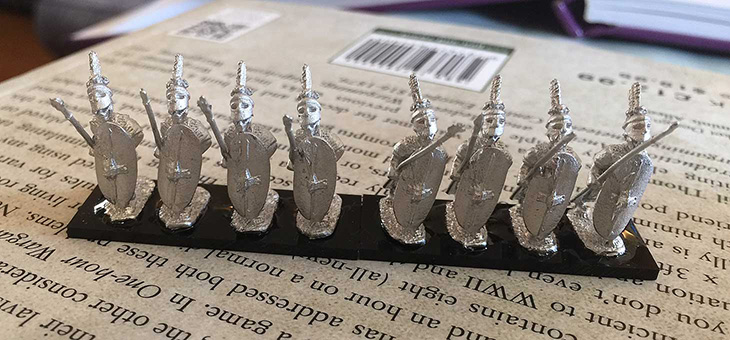
The Legion had a core of Triarii, with a "Hasta" as their main weapon, forming a third line of veteran long spearmen. They were outfitted with the same armour and shield as the other infantry, but being wealthy they could also buy a coat of mail for more protection.
If a battle went well, the Triarii did not have take part in it. However, if things went badly, the Triarii would stand up from their kneeling stance behind the line to engage the enemy. This prompted a common Roman expression "matters have come down to the Triarii," meaning things had become desperate. The Triarii were also dissolved during the Marian Reforms.
Equites (Cavalry - Cv) and Generals
The Roman Cavalry, sometimes called Equites, were the cavalry force of the Roman army and were made up of the Republic's very wealthiest citizens
These cavalrymen only had to serve 10 years rather than the 20 normally required the infantry.

Polybius doesn't give us any specifics to arms and armour, but mentioned they were similar to the Greek cavalry who are known to have worn a mail coat and carried a lance with a rear spike and a round shield. Equites were normally formed up beside infantry to protect the flanks. There were only 200 to 300 Equites in a legion, purely as complements to the main force and backbone of the Roman army - the infantry.
Polybian Roman Army
The Polybian Roman Army lined up for painting and for battle.
